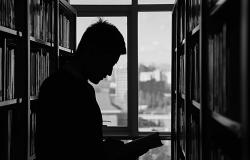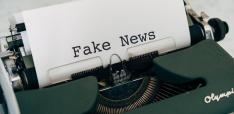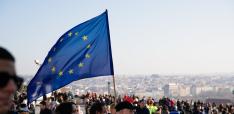Reading: An Introduction (for Researchers and Lovers of the Humanities)

Daniel Clausen with some useful tips and techniques for those seeking to refine their art.
As scholars, thinkers, students, and citizens, we are all craftspeople in the fine art of reading, are we not? I often used to think so, perhaps naively. I believed that at any given institution of higher learning, we all shared a common delight in the printed word.
Only later, as a teacher, did I find myself surprised by students’ lack of familiarity with the written word. Only later did I allow myself to be surprised at how many students relied on social media to read news and get basic information about the world. In the past, I have written about the importance of getting students to read more (see here). However, an unfamiliarity with techniques of reading may also be a problem for young researchers.
I know that I, myself, have had to refresh my reading skills, taking inspiration from such legends as Harold Bloom and Virginia Woolf. If reading is a craft, then we must be self-aware and discerning about our own craftsmanship. As Woolf writes;
“Now, one may well ask oneself, strolling into such a room as this, how am I to read these books? What is the right way to set about it? They are so many and so various. My appetite is so fitful and so capricious.”
Rather than take for granted the art of reading, we should instead look at the many ways of reading and the very act of reading as part of the research and thinking process. Here, I outline various methods of reading that can be applied in different cases. These examples come from my years as, first, an English undergraduate, then as a scholar in the social sciences, and now as an aspiring all-around and well-rounded thinker about the world.
Caveat Emptor: These approaches are as fitful and capricious as the writer of this sentence. They are just a beginning.
Skimming and Scanning. Skimming (the art of looking through a text quickly to understand the main ideas) and scanning (the art of reading quickly to identify specific information) are techniques many of us learned in the early stages of our education. However, I have found that as I have progressed as a researcher, I have had to continually master these techniques for no other reason than to maximize the value of my time reading. Without being able to skim and scan effectively, I might get bogged down in the foreverness of literature reviews. More importantly, the time I would normally devote to other pursuits would quickly evaporate.
Sensing. Sometimes I like to spend time at a library or on a research database as a kind of “tourist.” I often go through newspaper headlines, periodical headlines, journal abstracts, or even bookshelves just to understand what is going on in the world. I call this “sensing,” as in being observant about what is going on around me. In some cases, conversations with students and colleagues serve the same purposes. To make the most of your time “sensing,” it is often best to keep a journal and write about topics you are exploring.
Surveying. Closely related to “sensing” is a kind of reading I call “surveying.” In this case, I review a large body of texts related to a research topic to understand what works are relevant. Often, I will quickly look at abstracts, key words, and headings just to see whether a particular work belongs on my research read list. After I have built an extensive list of articles and books to read for a research topic, I will then usually try to cut down the list to a manageable amount. The point of “surveying” is to understand all the boundaries of the research on a particular topic.
Close reading. During my time as an English major, I learned a number of techniques for breaking down a text, such as critical reading (evaluating the strengths and weaknesses of a text), interpretive reading (reading to understand beyond surface content, including the symbolism and deeper meaning of a text), analytical reading (reading to understand patterns), comparative reading (contrasting two or more texts), and reflective reading (reading to understand aspects of one’s own thinking).
However, I believe one of the most useful forms of reading (for researchers and thinkers) is “close reading” (see here), where one pays attention to issues of word choice, sentence structure, nuance, and other details. Typically, a close reading is performed on a small aspect of the work, usually with the hope that such a close examination will reveal details about the whole. This method of reading often helps to hone the researcher’s mind to important details and to find aspects that are otherwise overlooked.
Reading the World / Movies / Art. As an English major, I was often asked to interpret non-texts – such as movies, art, and advertisements – as if they were texts. For example, I might be asked to break down the “visual grammar” of a film. However, the same can be done with other aspects of the world: monuments, speeches, policies, laws, or treaties, to name just a few. Just as a text can be subjected to “close reading,” so can other aspects of the world.
Reading like a Researcher. Engineers regularly reverse engineer; shouldn’t researchers regularly reverse research? Creative writers are frequently urged to “read like a writer” – in other words, to read great writers with a conscious eye towards craftsmanship in order to perfect their own techniques. Researchers can do something similar. They can read research articles to better understand methods of outlining research papers, writing abstracts, developing coherent arguments, and more. Perhaps for young researchers, the best advice I can give is: Don’t be afraid to steal the methods, analytical techniques, and even stylistic flourishes of other researchers (while avoiding plagiarism, of course).
Empathetic / Humanistic Reading. I would be remiss if I did not also mention the best benefit of reading – not necessarily the most beneficial for research – the human benefit (for inspiration, see this TED Talk). Done correctly, reading makes us more well-rounded, balanced human beings. It should also make us more empathetic and connected to the common human experience, refracted through our varied experiences, follies, and foibles. We can walk a mile (or a kilometer) in someone else’s shoes. We are connected to a larger human community.
Hopefully, the above methods have given you some literature for thought on how to improve your own reading toolbox.
But, also, heed the words of Virginia Woolf:
“To admit authorities, however heavily furred and gowned, into our libraries and let them tell us how to read, what to read, what value to place upon what we read, is to destroy the spirit of freedom which is the breath of those sanctuaries.”
Like other crafts, your reading skills will need to be honed for as long as you consider yourself a reader. Developing the reading techniques above will provide you with a good start. But it is not, and cannot be, the end all or be all…for you have much reading ahead of you. And if you read wisely, with an eye and mind for reading as a process, then your wisdom with regards to reading will soon surpass the boundaries of this miserly essay.
Daniel Clausen is a full-time lecturer at Nagasaki University of Foreign Studies. He is a graduate of Florida International University’s Ph.D. program in International Relations. His research interests vary widely from Japanese foreign policy to English language teaching. His research has been published in Asian Politics and Policy, e-International Relations, Electronic Journal of Contemporary Japanese Studies, The Diplomatic Courier, and Culture and Conflict Review, among other publications.
Photo by Pixabay


